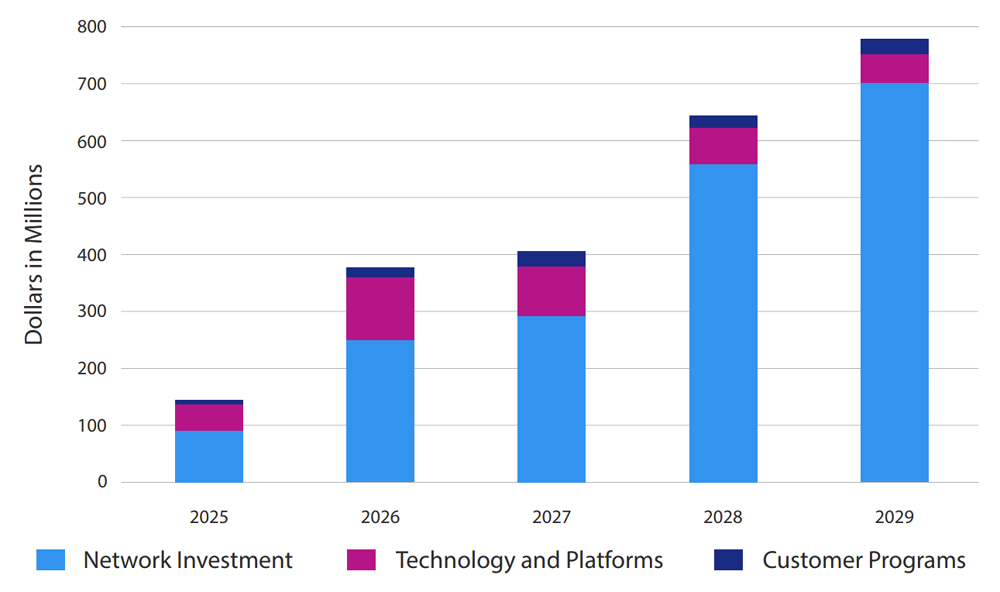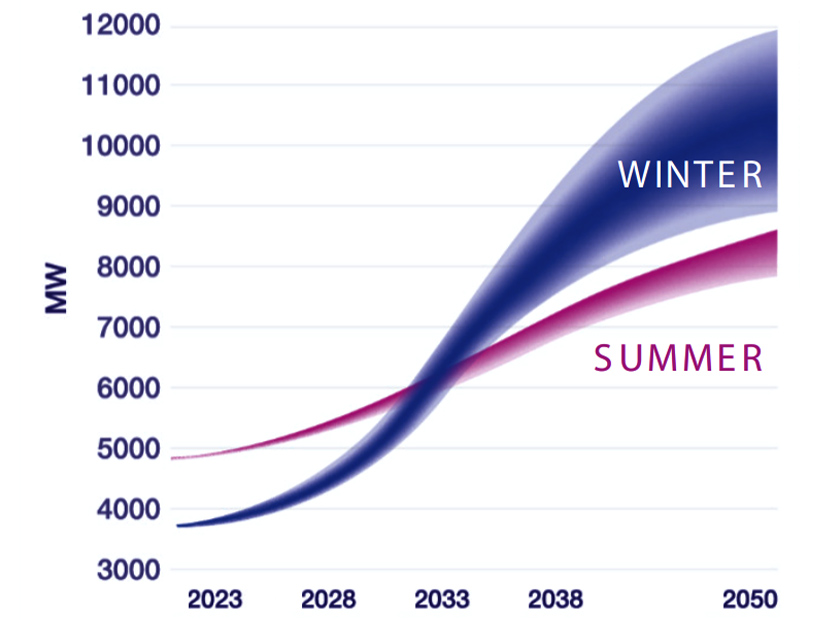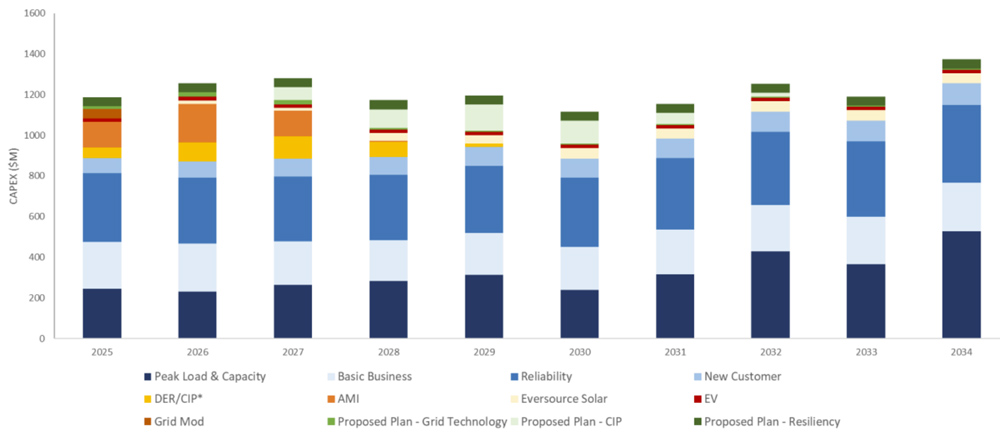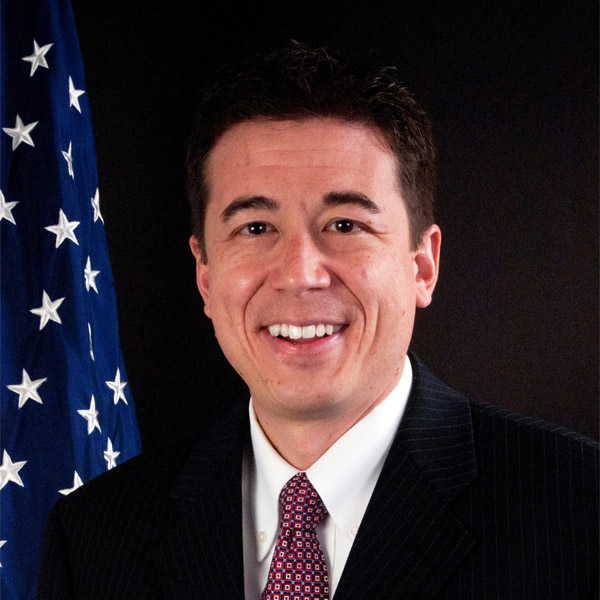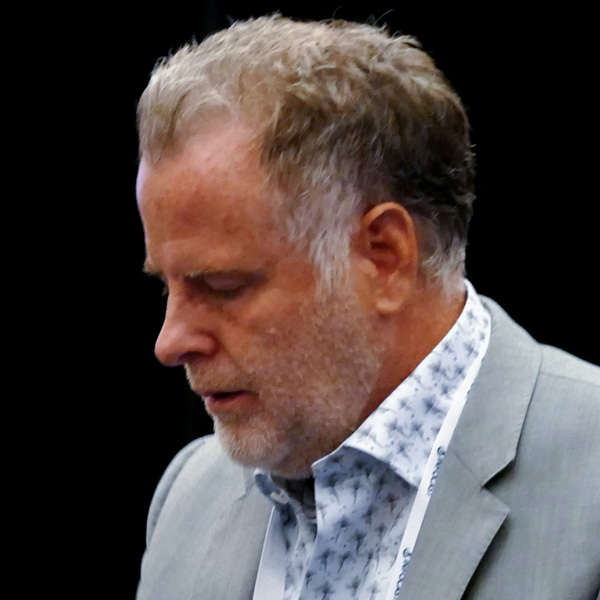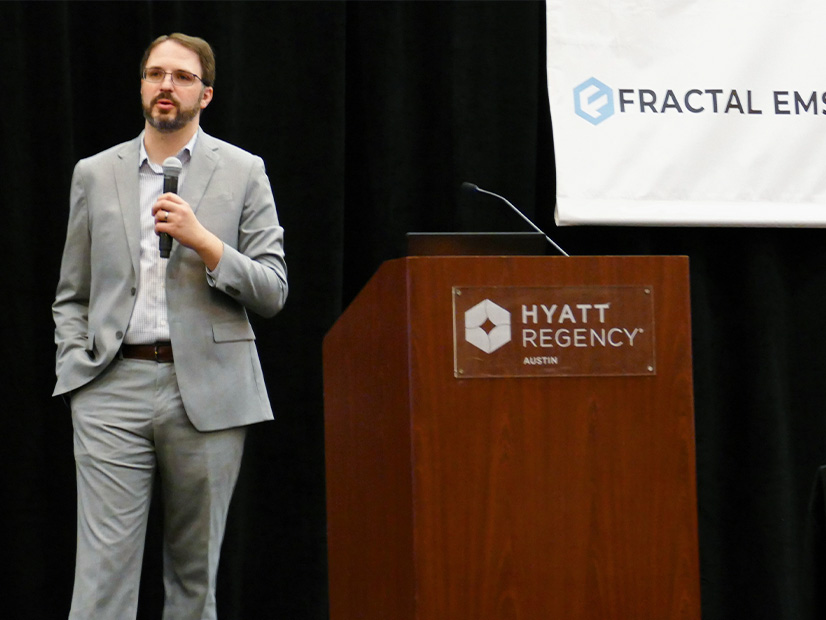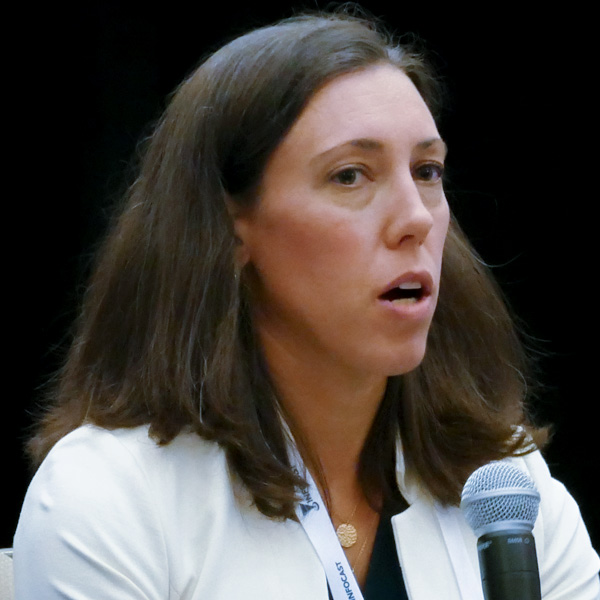Eversource and National Grid expect their annual peak electricity load in Massachusetts to more than double by 2050, the utilities told the state’s Department of Energy Resources (DOER) last week.
The projections are part of the draft electric sector modernization plans (ESMPs) submitted to DOER by Massachusetts’ investor-owned electric utilities, which detail the electric distribution companies’ plans to meet the massive increase in electricity demand associated with the electrification transportation and heating in the state.
The wide-ranging drafts also include near-term investment proposals, five- and 10-year demand forecasts and solutions planning, and they mark a major change in how the state conducts grid planning.
The Grid Modernization Advisory Council (GMAC), a stakeholder committee created by the state’s 2022 Act Driving Clean Energy and Offshore Wind and convened by DOER, will review the filings, solicit public feedback and provide comments on the utilities’ drafts.
“It’s really taking a forward-looking approach for the first time in Massachusetts’ history,” said Kyle Murray, Massachusetts program director for the Acadia Center and GMAC voting member. Murray said grid planning in the state historically has happened in an “ad hoc manner.”
Murray added that one of the council’s goals is to engage the public in the grid modernization process and include voices that historically have been absent from these proceedings.
The draft ESMPs outline the large infrastructure investments that will be needed to enable the clean energy transition, including huge increases in peak electrical loads. National Grid expects its annual peak to increase from about 4.6 GW to 10.7 GW.
“Annual peak load, which is the maximum demand on the system in a given year, is expected to grow across our network 7% by 2029 and 21% by 2034 relative to 2022 levels, and more than double by 2050,” National Grid wrote in its 726-page report.
Eversource expects an even larger increase for its system, anticipating its peak to rise from about 6.1 GW to 15.3 GW.
“The majority of this 150% increase in electric demand by 2050 is driven by electrification of heating needs (about 50%) with the remaining driven primarily by electrification of transportation needs (25%) and normal load (25%),” Eversource wrote.
The utilities also noted that the increasing reliance on distributed energy resources (DERs) will further strain the grid and necessitate additional upgrades.
To meet the expected demand increases, Eversource proposed building 12 new substations and upgrading 16 existing substations. The company also proposed three new substations and 14 upgrades to accommodate additional solar resources. National Grid proposed upgrading or expanding 18 existing substations and building 28 new substations by 2034.
“Absent making these system investments in advance of these new peak demand levels, the expected load growth will result in overloads of existing equipment, which would impact the safety and reliability of our network operation,” National Grid wrote.
Murray said one of his main hopes for the process is to help clear out the interconnection backlog of renewable energy projects.
“We know we need as many renewables on the market as possible, and yet they’re coming on at a pace that’s kind of like a trickle,” Murray said.
“Building system capacity with substations and battery storage systems will provide a critical foundation for enabling electrification and reliable interconnection of DERs,” Eversource wrote.
The utilities emphasized the importance of early public engagement while making these investments, and jointly proposed the creation of a Community Engagement Stakeholder Advisory Group (CESAG) to help boost engagement with potentially impacted communities. Under the utilities’ proposal, the group would be led by the utilities, with members agreed upon by the GMAC.
In an August letter to the GMAC, María Belén Power, undersecretary of environmental justice and equity at the Office of Energy and Environmental Affairs, stressed the importance of including environmental justice communities in the infrastructure siting process.
“[Environmental justice] populations should be engaged in public processes from the very beginning, not as an after-thought, and the engagement must be coupled with meaningful outcomes and results,” Power wrote. “Adding equity or community outreach as a final step in the process does not allow for a meaningful process. Successful community outreach happens when the voices and perspective of those most vulnerable are reflected in the outcome.”
Power said all communities affected by new grid infrastructure should be given ample opportunity to participate in siting processes, with accommodation made for the different languages spoken by residents. The undersecretary also emphasized the importance of considering the cumulative effects of grid infrastructure.
“When planning for new energy infrastructure or enhancement of existing ones, we must ensure we are not causing additional harm to those who have historically been overburdened,” Power said. “When possible and if feasible, if a project may cause additional harm or burden on EJ populations, an alternative site should be identified.”
The utilities also outlined some mechanisms to reduce future demand, including energy efficiency, advanced metering infrastructure, managed charging and time varying rates.
“Regulatory and tariff changes that enable time-varying rates and recognize the shift toward greater electrification are required to support more impactful offerings to offset peak demand growth with increasingly flexible loads and expanded deployment of distributed resources,” National Grid wrote.
Larry Chretien, executive director of the Green Energy Consumers Alliance and a GMAC member, told RTO Insider he still is reviewing the drafts, but agreed on the need to develop programs like time-varying rates and managed charging focused on reducing peak demand. High demand peaks lead to both higher costs for consumers and increased fossil fuel combustion.
“We think it’s sacred that we’ve got to reach our climate goals, but we also want to make sure that it can be afforded by folks who are economically vulnerable,” Chretien said. “I want to push the utilities on trying to bend the demand.”
The GMAC will hold public listening sessions Oct. 30 and Nov. 1, with final feedback and recommendations from the GMAC due Nov. 20. The utilities then must file their final ESMPs with the Department of Public Utilities in January.
